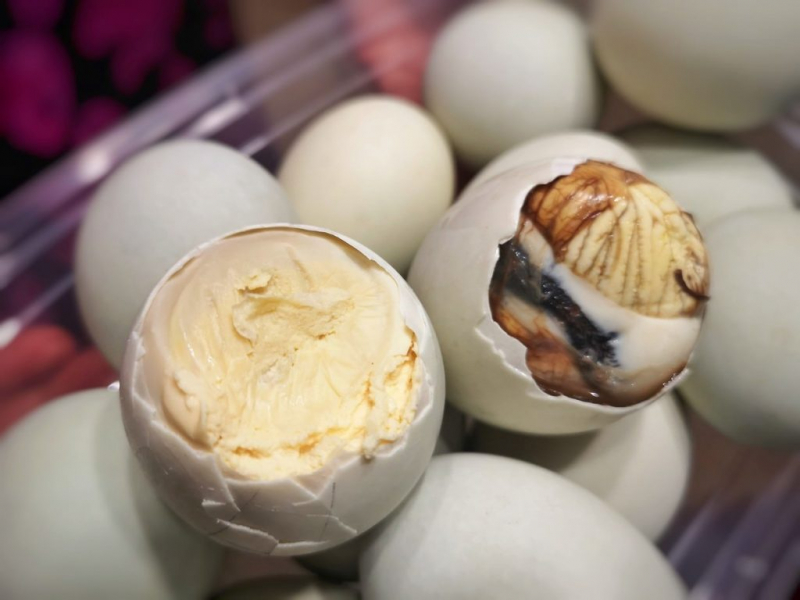Balut

Balut is a well-known dish in this cuisine guide. Even if you've never eaten Filipino food, you've probably heard of balut. It refers to a fertilized duck egg embryo that has been incubated for 14-21 days before being boiled and eaten directly from its shell. Balut is made up of four parts: the "soup," the yolk, the embryo, and the albumen, which is typically too tough to eat. Balut containing embryos in various stages of development can be found depending on how long it was cultured before being cooked. It is stated that the ideal incubation period is seventeen days. Except for its developing feathers, the embryo is utterly mushy and unidentifiable at that time.
Having said that, it's not unheard of to receive balut that's been incubated for a longer period of time. Those will have significantly larger embryos that look like ducklings. They're still soft and edible, but their beaks may have hardened and you'll have to spit them out. You may also come across a variant of balut known as "penoy." These are the balut eggs that did not mature adequately after 9-12 days. Balut penoy is similar to a hard-boiled egg in that there is no separation between the yolk and egg white, similar to a semi-scrambled egg still in its shell.
Balut is a popular Filipino street meal that is high in protein and calcium. If you find these difficult, don't be concerned; many Filipinos do as well. Balut is commonly seasoned with salt and/or a chile, garlic, and vinegar mixture before eating. Some restaurants will even offer them in a more sophisticated manner these days. They can be served in adobo, on hot skillets, and even in a souffle.













